Dear Steemit friends :
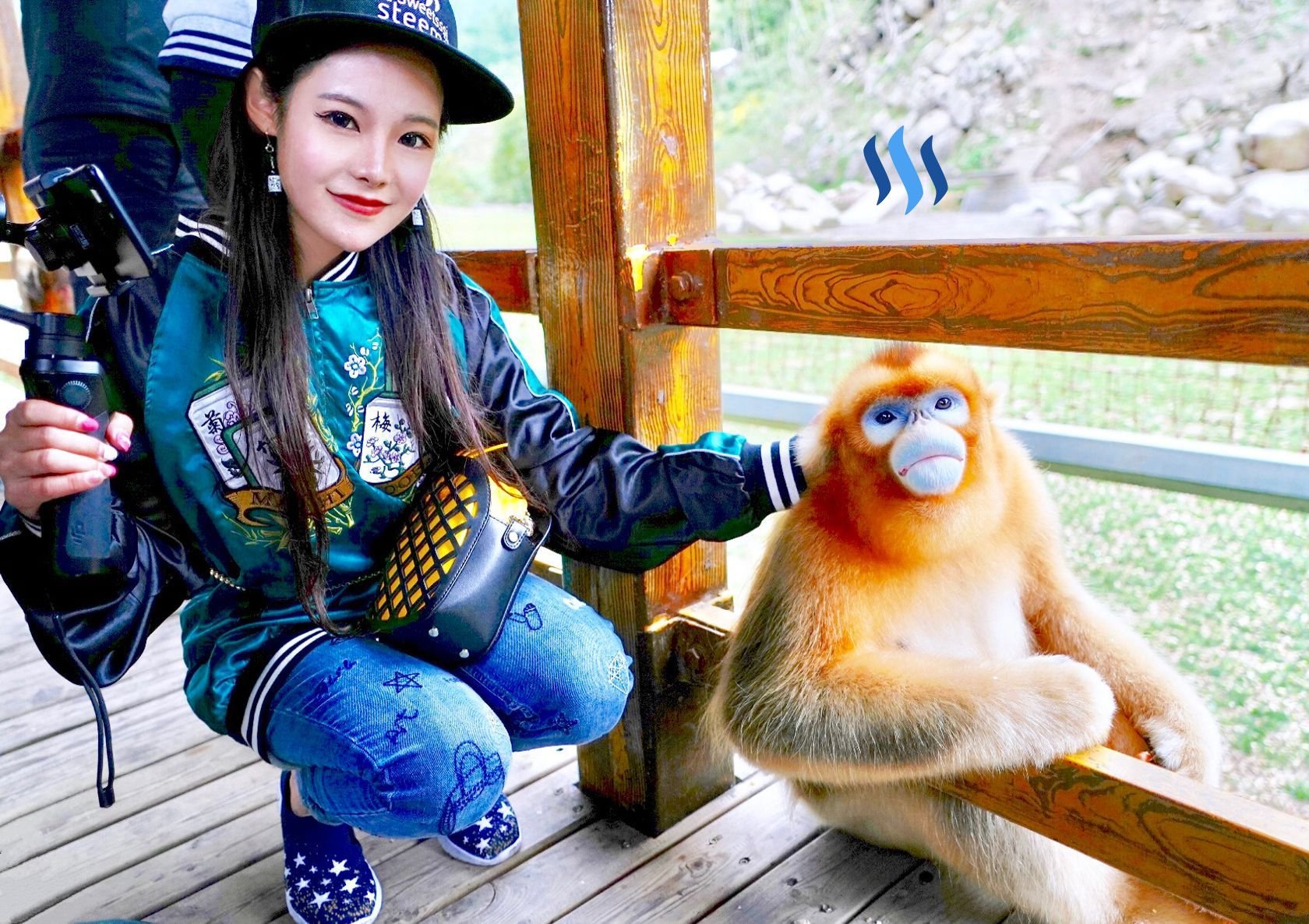
In our exploration of the Qinling mountains of Shaanxi Province thus far, we have encountered some of the most endangered species in the world, pushed to the edge of extinction as a result of systematic destruction of the natural environments they have inhabited for thousands of years.
The Qinling mountains are said to possess unique habitats because of it's vast mountain ranges wrapping around swaths of land, shielding these plains and valleys from the usual extremities of weather. This in turn has allowed animals which rely on specific environmental conditions to thrive. Sadly, due to rapid deforestation and poaching, many of these animals have become vulnerable.
So far, we've seen the Giant Panda and Golden Takin re invigorated in numbers thanks to the work of the local conservation. Although the population of the Giant Panda and Golden Takin have increased ten fold from their lowest points, their species remain vulnerable and rely on successful breeding programs to introduce more of them into the wild.
Today, we are going to have a look at one of the rarest primates in the world, the Golden snub-nosed monkey.
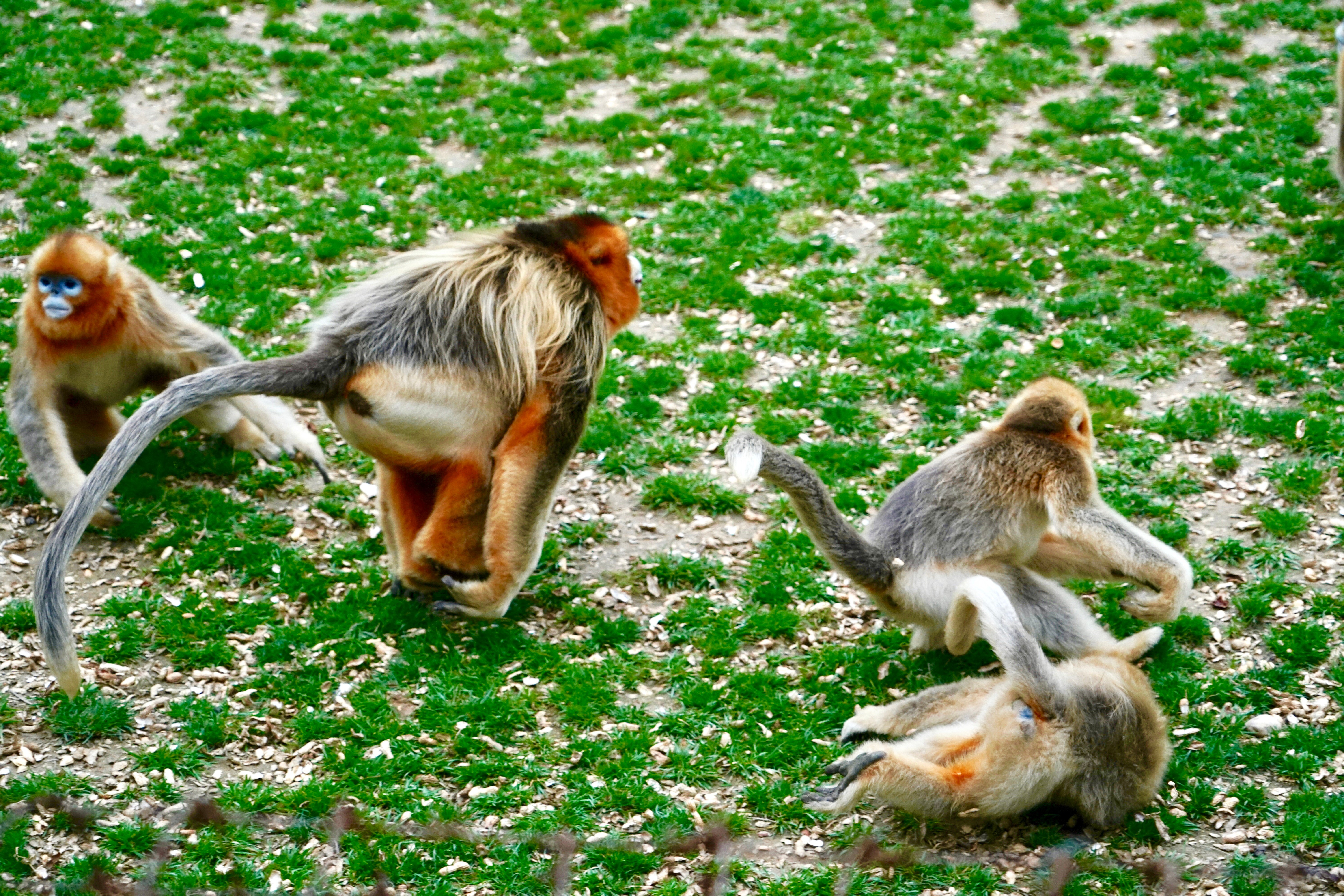
Before seeing these Golden Monkey's, my only experience and contact with Monkey's have been at the Zoo, and at a fair distance between me and the monkey's. When I arrived, I still believed that I would be seeing them from a safe distance...until they all started jumping over the fence and climbing on the observation deck!
Before we get up close and personal, let's cover some of the basic facts about the Golden snub nosed monkey's.
The Golden Snub-nosed monkey's are one of three species of the snub-nosed monkeys and are the most widely known variant in China.
They are characterised by their light blue faces, and lush golden coats.
The golden snub-nosed monkey's will live in the mountains at elevations between 1500m and 3000m, whilst their diet is primarily pine-needles, bamboo buds, leaves and lichen.
The population is estimated to be 8000 - 15000 in the wild.
They can live up to 30 years and the females will give birth every 2 years.
They have multi-tier societies based on bands or groups of one-male-units.
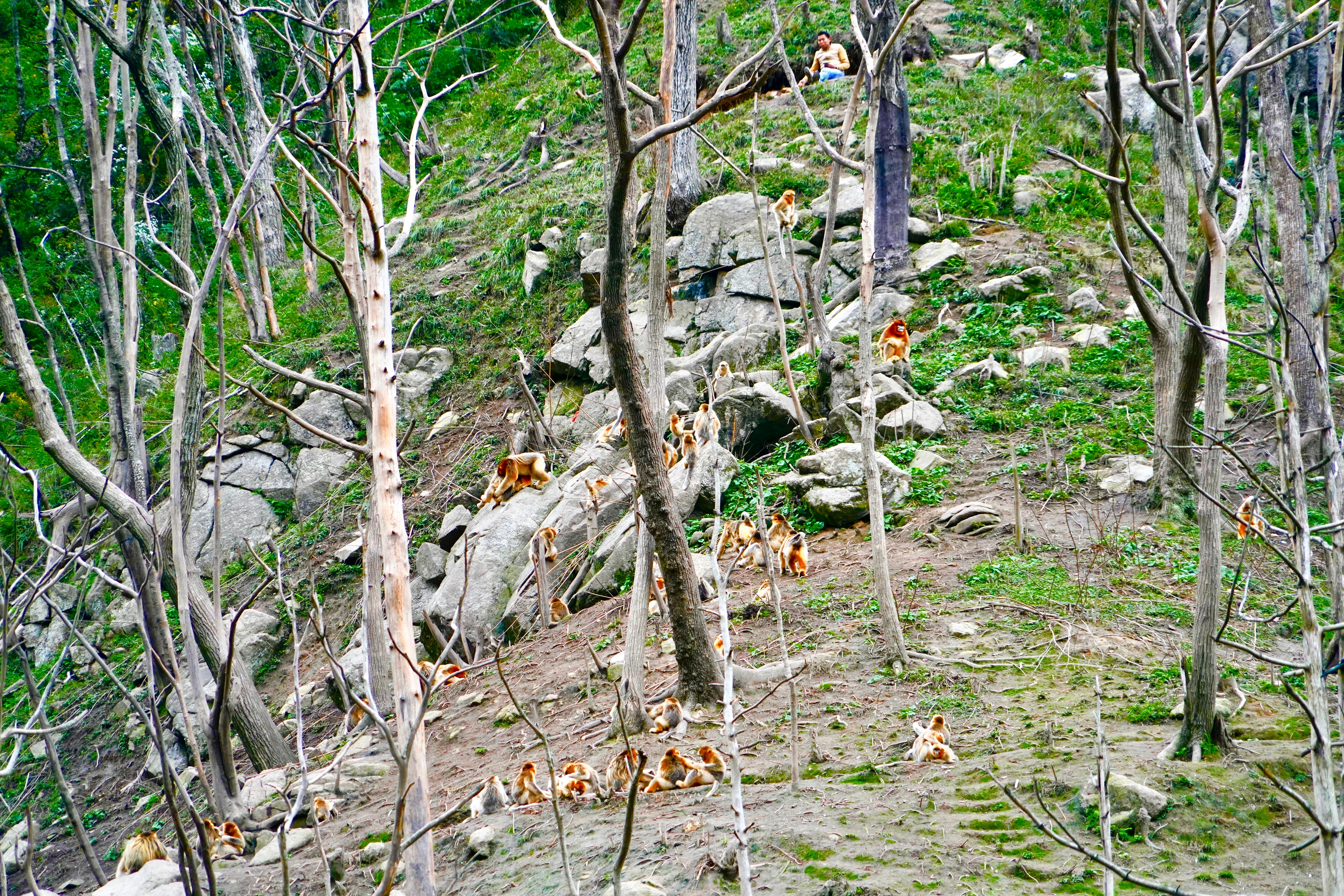
As you can see from picture above, the Golden snub-nosed monkey's are quite social creatures, operating in distinct sub-groups or units. Even though the numerous groups may work together when foraging for food, the groups themselves are well defined and will generally keep to themselves.
In the Golden Monkey society, each sub-group will have one main breeding male, and then a harem of females and their infants. These 'one-male-units (OMUs)', are then often banded together to form bigger groups but interactions between them remain minimal.
I could barely see the groups of monkey's in the mountains. I had to use my zoom lens to make them out. Even more surprising was a man on the side of the mountains, seemingly feeding the monkey's. Usually, the different groups will have their own territory, any trespassing will result in physical confrontation.
What is most obvious, is the alpha male of the group. I like to call him the King Monkey because of his obvious size and dominance.
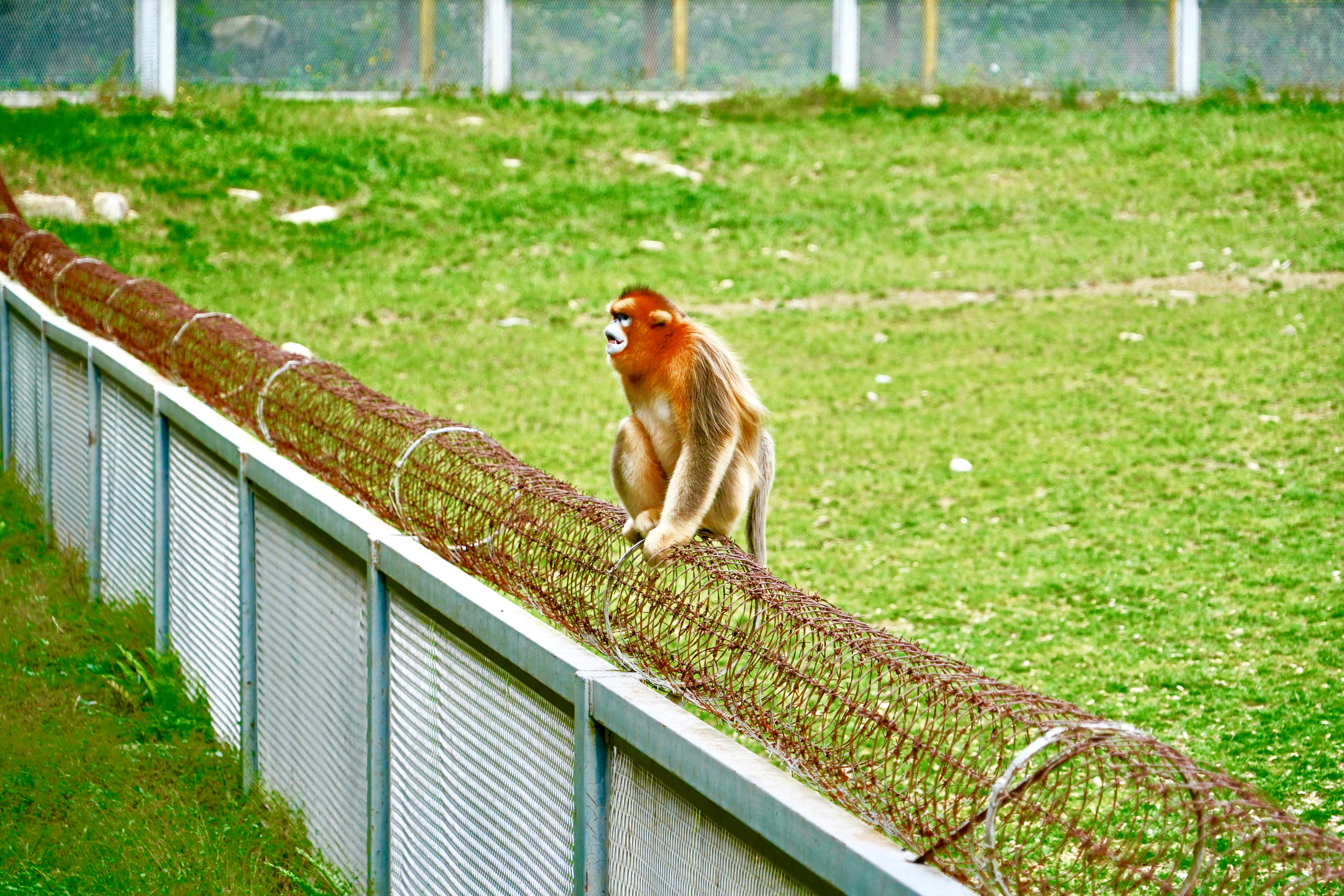
The King monkey although respected by the whole band, is often solitary and will sit alone for extended periods of time whilst the rest of his group stick together.
Whilst sitting down, the Monkey King will keep a watchful eye for threats, it goes without saying that he's also always on the watch out for any potential sources of food.
For some reason, the King Monkey seemed to take a liking to me. Of all the people on the observation deck, I was the only one he would seem to stare at. I was beginning to think he wanted me to join his harem!

This is one of the snub-nosed infants. As you can see, their blue face occupies a smaller surface area when they're young, and their long fur coats are much less developed at this stage of their lives.
One of the reasons for the decline in population of the Golden snub-nosed monkey's, is that their fire-orange fur was believed to ward off rheumatism if worn by humans, while their bones are believed to hold special medicinal powers. At the height of their decline, the majority of the population had to be forced into captivity in an effort to save them.
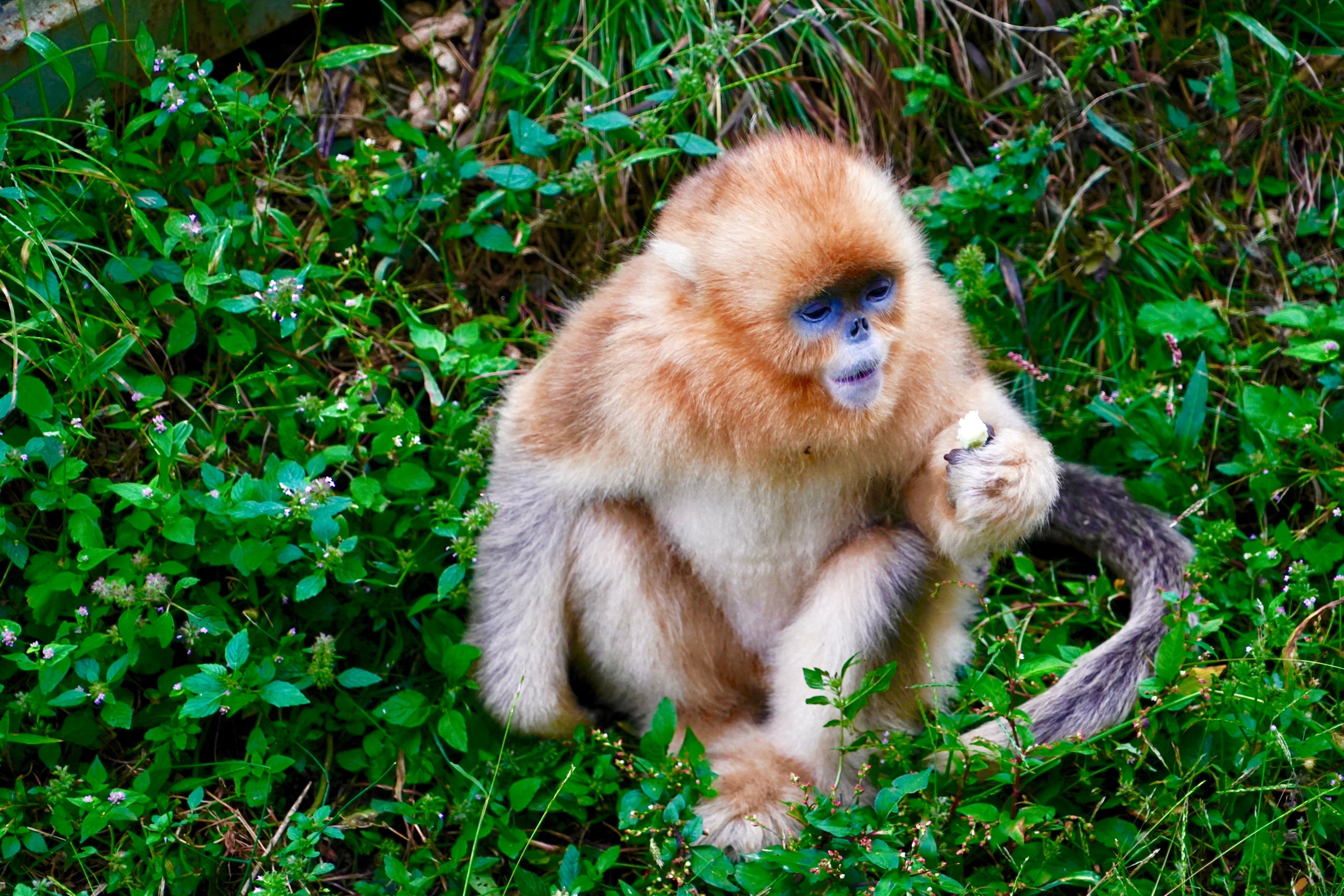
This picture depicts the relationship between the Monkey King and his subordinate within his own OMU. Because of his seniority over all the others, the Monkey King has first priority when it comes to food. Others will have to wait their turn, or let the Monkey King take the food right off their hands.
Until a young infant grows up large enough to challenge the monkey king, the hierarchy and pecking order will remain the same.
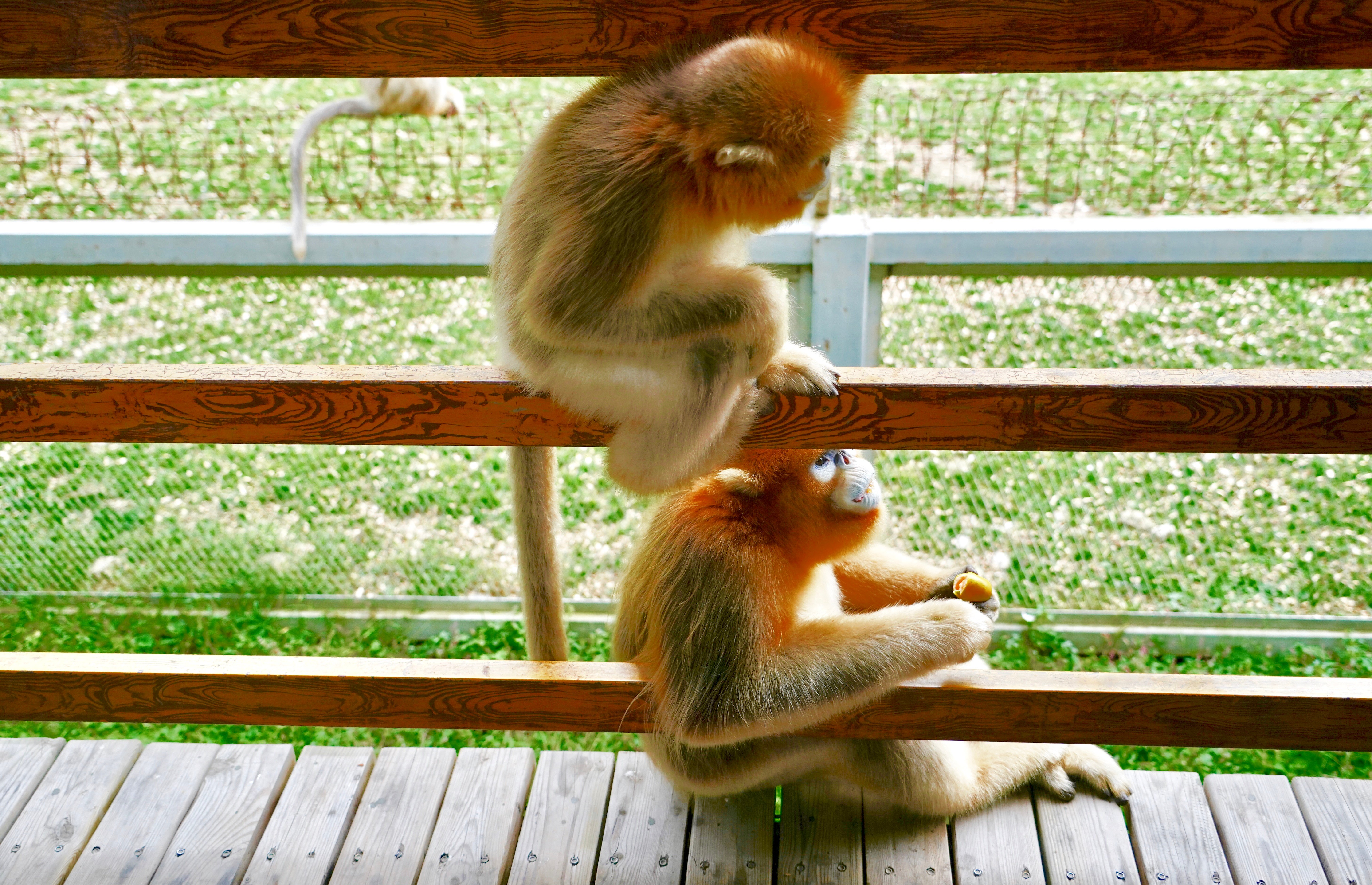
The ancient Chinese believed that the Golden monkey's were good examples of morality. Respecting the old, and nurturing the young. Truth be told however, senior monkey's such as the Monkey King would be marginalised if not violently attacked once they were too old to hold their position in society.
Relegated kings will often join All-Male-Units alongside other males who fell out of favour in their own OMUs.
As mentioned earlier, the primary diet of the Golden Monkey's are tree needles, bamboo buds, fruits, leaves and lichen. Although they are well felt by the keepers of the reserve, the Monkey's will quite happily leap over the fence onto the observation deck where all the visitors are if they are offered food.
The monkey's are very dexterous, having excellent control of their hands and fingers, allowing them to peel fruits, crack open nuts, and even steal food from you.
Meanwhile, they are seemingly unafraid of human beings and will quite happily come up close to you, sit by you, or even walk amongst you. I guess genetically we're not actually too different from them at all.

The barbed wire fence set up as a barrier between the monkey's and the human visitors failed miserably. The Golden Monkey's have little to no trouble at all climbing over the fence and even leaping over to the observation deck. Even the infant monkey's would join in.
The King Monkey would perch at a distance and keep a watchful eye for the safety of his group. More importantly, he's also looking for a good opportunity to snatch some food off his subordinates. Very often, the smaller monkey's will pick up some nuts or fruits from the visitors, only to have them taken away by the King Monkey.
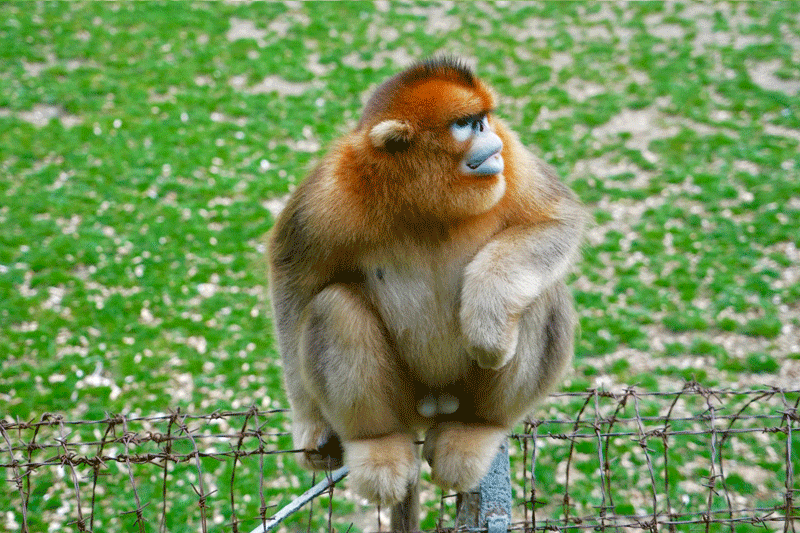
Officially, the monkey's are fed three meals a day. Breakfast, lunch and dinner. The food is carefully prepared to boost the monkey's nutrition, but it also serves as an opportunity to see large numbers of them congregate as they hustle and tussle for food.
Outside of feeding time, the Monkey's will eat their usual diet of pine needles, fruits, nuts and lichen. Very often, they will be enticed by food which the visitors bring to feed the monkey's. It is actually prohibited to feed the monkey's as it interferes with their carefully controlled diet, but in practice, the keepers are tame about it.
The monkey's begin leaping over directly from the fence, and as they do so, the crowds of people on the observation deck will shriek and gasp in surprise and even fear as the monkey's scavenge and pick the fruits and nuts straight off people's hands.
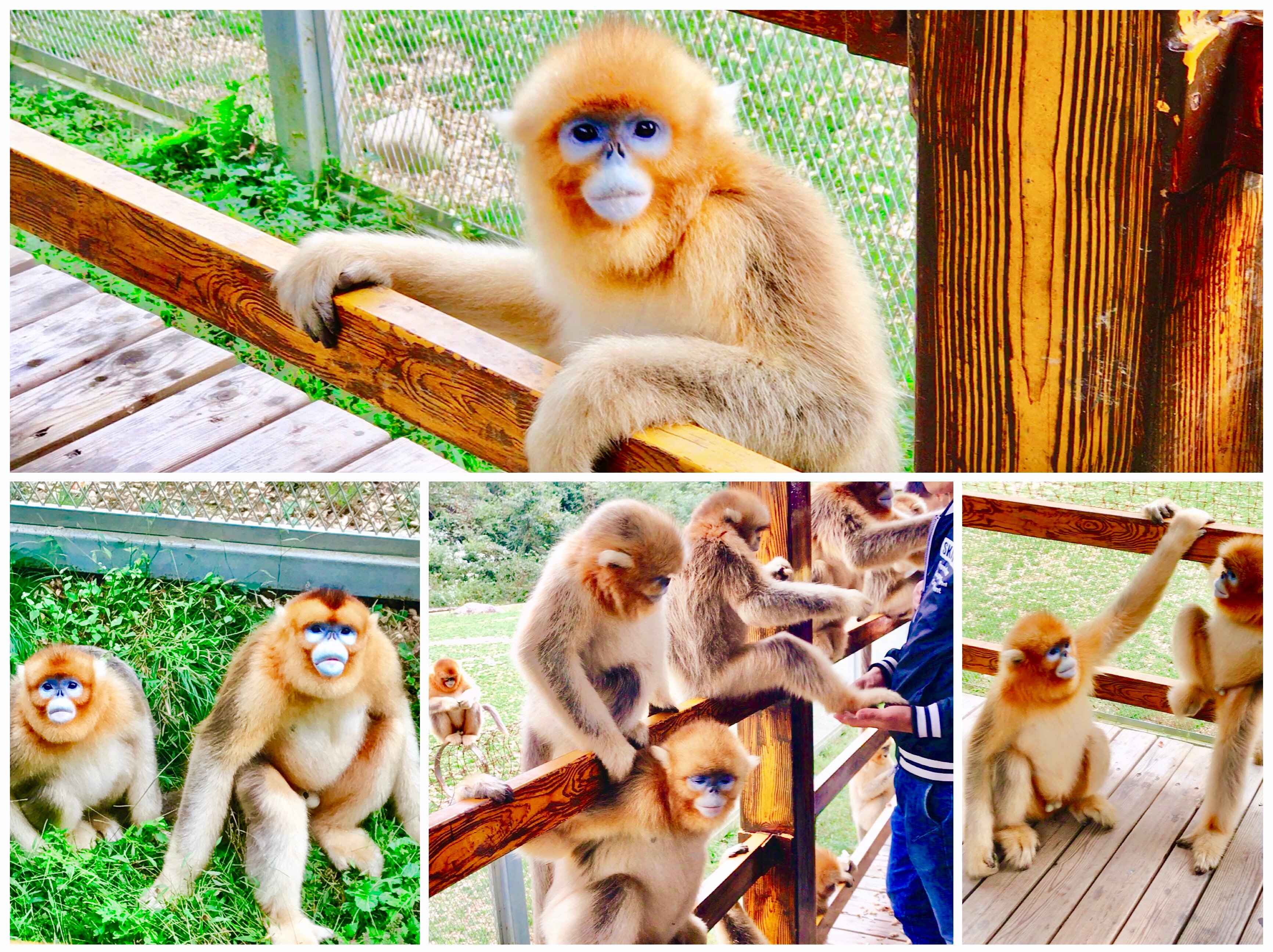
They can be quite civil about it, or they can be quite rude. In the latter case, they will even pick your pockets to steal whatever food they can find. In most cases, they will sit on the ledge and wait for you to offer them food, if you don't have food, the monkeys grow impatient and start feeling your pockets or snatching whatever they can from your hands. It is a wonderful opportunity to interact with them up close and personal!
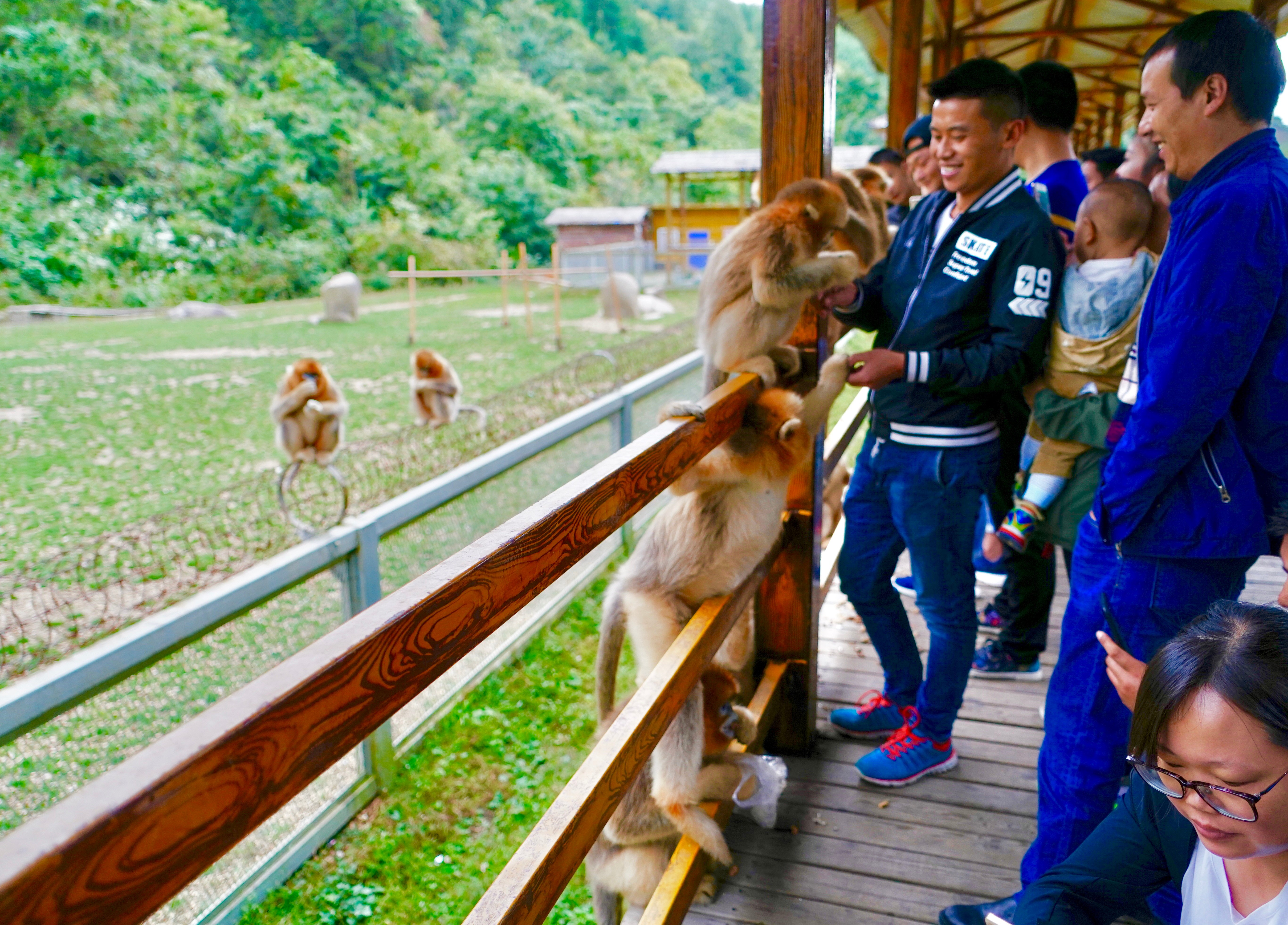
The King Monkey was too preoccupied eating his fruit and nuts that I don't think he realised I was the person he was staring at from earlier. Still, he seemed really comfortable being patted on the head. The long fur on his back was thick and rough - no wonder it is able to protect him from deep snows in the winter.
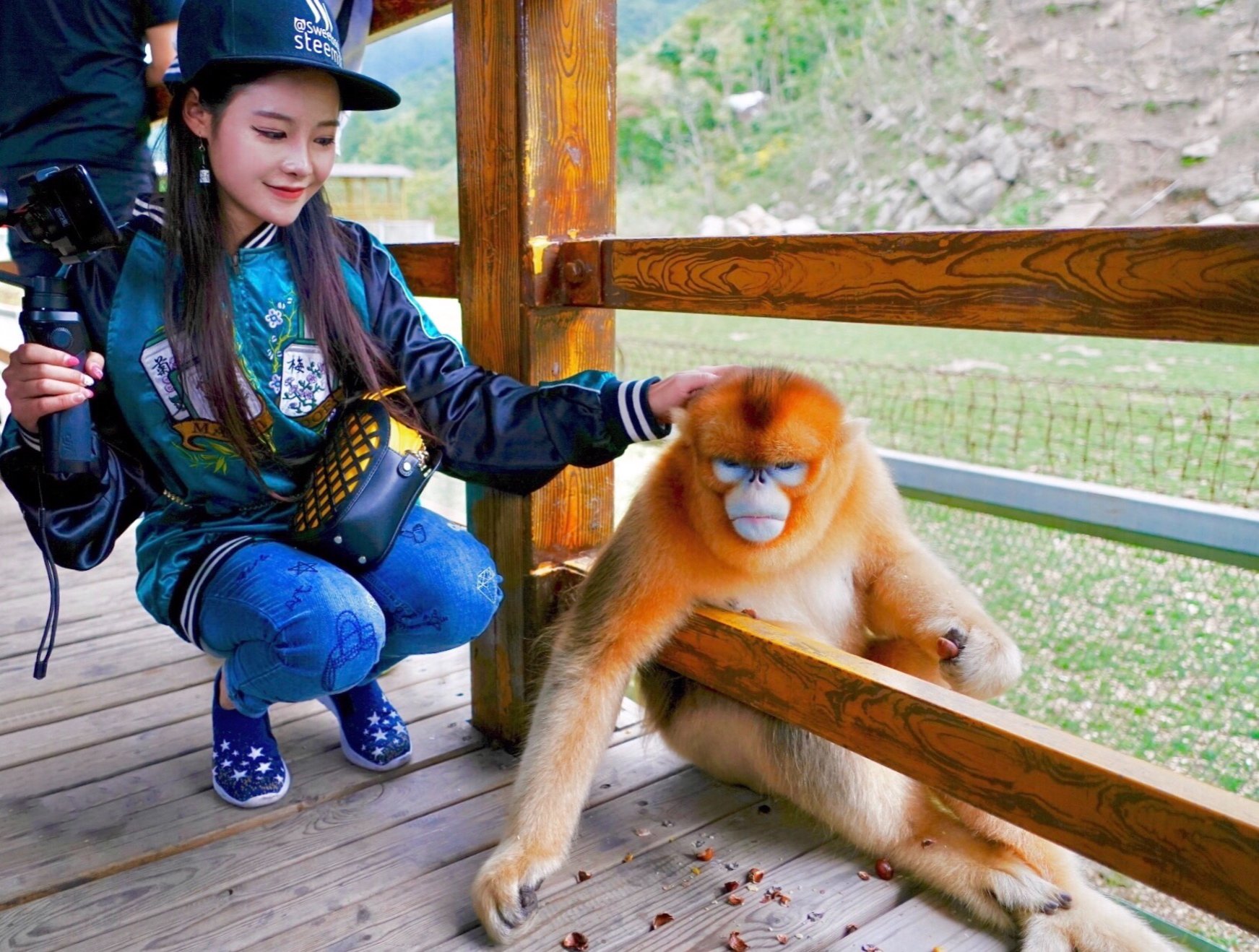
One of the funniest moments was definitely when two of the Monkey's jumped over to the observation deck, then walked across it through a bunch of terrified people with a banana in hand, and his friend closely following behind.
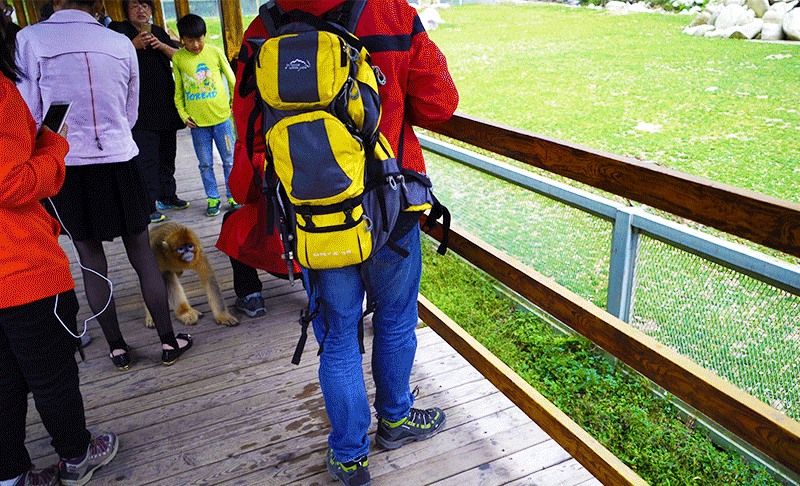
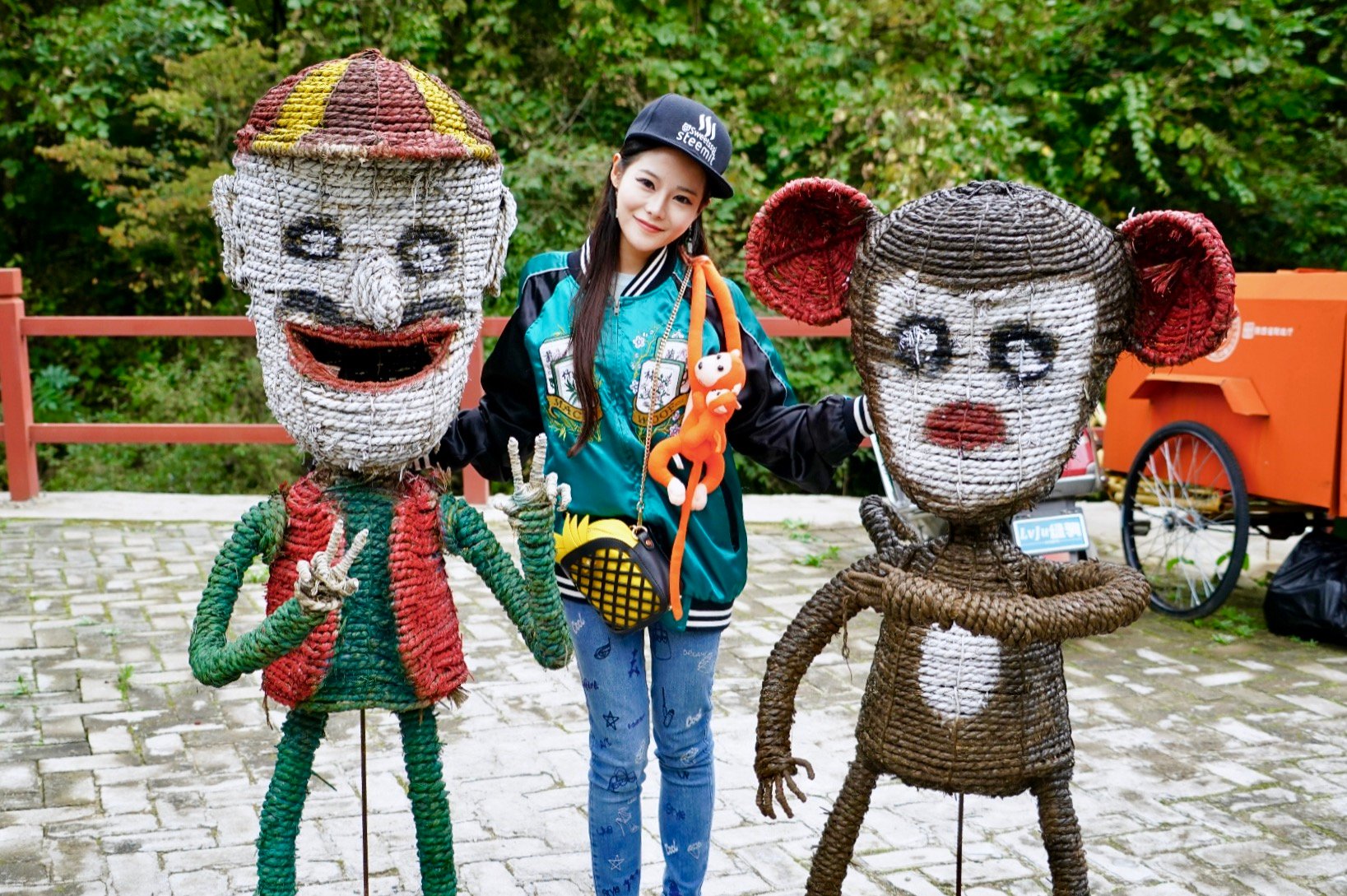
Check out the video for more Golden Snub-nosed monkey antics!
And that concludes our visit to the Golden Snub-Nosed Monkey reserve in the Qinling Mountains. Seeing these Monkey's up close and personal and even interacting with them is an experience that really helps you to get to know these animals much quicker and at a much deeper level than just seeing them from far. The Golden Snub-Nosed Monkey's are a highly sought after animal for it's fur and bones, and sadly, that has made them a vulnerable species now under the lawful protection of the Chinese government.
Even though they might have limited use in Chinese medicine, and their fur coats might be extremely warm, it is no excuse to hunt them to the brink of extinction. The end of their species is not worth any amount of fur or special medicinal powers. I'm very glad to visit and see for myself the measures taken to protect these animals. Although their populations have consolidated, it remains a long and arduous task to bring them back to thriving status in their natural habitats. We can only hope that this may become a reality in the not so distant future.
在秦岭深山中遇见的四大国宝,如果一定要让我在其中选一个最爱,我不得不说,接下来要与大家见面的最后一个压轴国宝,让我有种想要带回家的冲动。它们不是一般的猴子,它们是秦岭金丝猴,是金丝猴家族中比较特殊的一支种群,它们生活在高山密林之上,聪明机警,行踪难觅,有着“丛林精灵”的美称。它们的配色极其漂亮,金色的毛发,配上天蓝色的颜面。我从没有见过自带天蓝色面容的任何生物。所以第一眼看见金丝猴,完全不敢相信它们面部的颜色是真的,像是带了个漂亮的面具,还是贴了张天蓝色的面膜或者涂了蓝色的bb霜?脑子里不停闪现这些不着边际的猜测,真的有些忍不住想伸手去摸摸它们的脸。
其实金丝猴这个名字在我的记忆里一点也不陌生,说起来有些好笑,我第一次听到金丝猴这三个字,还是小时候参加鞠萍姐姐的央视少儿节目,赢了小竞赛之后获得了一包“金丝猴奶糖”,那时候虽然不知道金丝猴和奶糖到底是什么关系,但是却记住了包装上那只瞪着可爱大眼睛,萌萌脸的小猴子。这次一听说我有机会可以走进秦岭山里的金丝猴王国,我就兴奋不已,想想它们代言的小奶糖可是从小吃到大,现在终于可以看到金丝猴本尊。坐上开往山上观赏点的大巴,抬眼远眺在迷雾下层层叠叠高大秀美的秦岭山脉,不知道哪里才能寻到金丝猴的身影呢?就算看到会不会只有几只呢?很快下了车。看见在自己不远处的山上好像长满了密密麻麻,金黄色的小果实,走近了一看,原来小果实竟然是一排排或坐或躺,悠闲自在的金丝猴。
听工作人员的介绍,秦岭的野生金丝猴总共有5000多只,现在在我眼前这群纯野生金丝猴群有大约150多只,它们常年居住在这里,就算寒冷的冬季也不曾离开。如今每天都会期待着工作人员的辅助投食,生活过的很惬意,也可见这里的金丝猴对人类依赖性还是很大的。在工作人员的招唤下,猴群快速从对面山头下来,渐渐的向山谷靠近,或三五成群,有的互相理毛,有的追逐嬉戏,看到我们这群千里迢迢赶来看望它们的客人,开心的在地上打滚,这是有朋自远方来,不亦乐乎吧。它们金黄的毛色和淡蓝的面孔在阳光下分外亮丽,有一些个头小小的婴儿金丝猴,毛色稀疏,它们天使般灵动纯净的眼神,还有东张西望的神态非常惹人爱。周围的游客纷纷拿出“长枪短炮”,手机和相机。它们类似人类般的机灵动作,搞笑姿势和憨憨的表情谋杀了无数菲林。这些丛林小精灵很有镜头感,纷纷摆出搞怪的小表情,逗的大家笑个不停。虽然隔着两层护栏,但是金丝猴天性的感染力完全阻碍不了游人和猴群和睦的互动。
突然也不知道哪些游客,拿出了自己事先准备好的果实和小果仁,猴子们听到了食物的声音,像是突然惊醒般,带来一片骚动,整个场面突然变得热闹起来。几只体型略大的猴子情绪激动,动作变得夸张,爬到很高的地方,伸着脖子不停向护栏的另一面探望,眼神不停的找寻好吃的。它们的动作让我想起了孙悟空踏着七彩祥云的经典姿势,看来再多的妖魔鬼怪也阻挡不了金丝猴要吃零食的冲动了。说时迟,那时快,一只猴纵身一跃,跳过了护栏,一下就抱住了观赏点走廊的栏杆,大家都被金丝猴突然的灵巧一跃震住了,顿时一片寂静。原来这两层的护栏对于金丝猴来说,完全不是阻碍,看见食物就情不自禁的越过来了,看来金丝猴也是一群小吃货呢。跳过来的猴子越来越多,游人递来新鲜的香蕉,猴子立刻接过来边拨皮边吃,动作熟练,像人一样。
突然一只头上留着黑色莫西干发型的金丝猴跳了过来,其他猴子吓的四处逃窜,我还没缓过劲来,这是发生了什么,只见游客们纷纷吓退了好几步。眼前这只猴子体型比其它的魁梧很多,身上一股霸气。这就是传说中一山之主,金丝猴王国里的猴王,壮硕的成年公猴。一开始我有些担心猴王很凶会伤到游人,但是它一过来就立刻专心的品尝游人带来的零食,放松了警惕。当有些“不懂规矩”的公猴为了争抢零食追逐打斗的时候,猴王呱啊一声怒吼,震的枝叶摇晃,捣乱的公猴立刻退避并屈服,之后猴王国又重归和谐。从没想过,在金丝猴的世界里,规矩是它们重要的原则,每一只猴子最后都会乖乖遵守猴社会里的秩序和逻辑。这大概也是为什么,它们可以把与大自然和人类的关系处理的这么好,它们成熟的反应和互动,似乎与人类心灵相通。这时候游客们也不再矜持,纷纷掏出口袋里的瓜果,与可爱的金丝猴交流互动起来。有些金丝猴站了起来,在人群中穿梭游逛,不时摸摸周围人的口袋找寻零食,有的游客也和金丝猴握手,摸头,一副好哥们的样子。
对于这样零距离的互动,我事先是完全没有心理准备的。谁会想到,今天的猴王心情甚好,带领猴群们来到了游客身边。后来我也鼓起勇气,喂猴王零食,并温柔的摸摸它的头和脸庞,这时候我才真正的相信,这仿佛从天堂降临的天蓝色脸庞,真的是金丝猴的面容。与金丝猴猴王的零距离接触真的太有趣了,喜悦的气氛蔓延了整个山谷。同时我也多么感慨,在人类的自然生存环境都受到挑战的今天,秦岭的深山中,仍然能找到一片留给金丝猴栖息享乐的王国,充满爱心和责任感的引猴人悉心关照着金丝猴和这片土地。爱护环境,保护生态,应该从每一个人做起,愿人与自然和谐相处的动人景象永不消逝。今天拜访金丝猴王国之旅就要告于段落了,之后还有更多有趣的游记要分享给大家。

